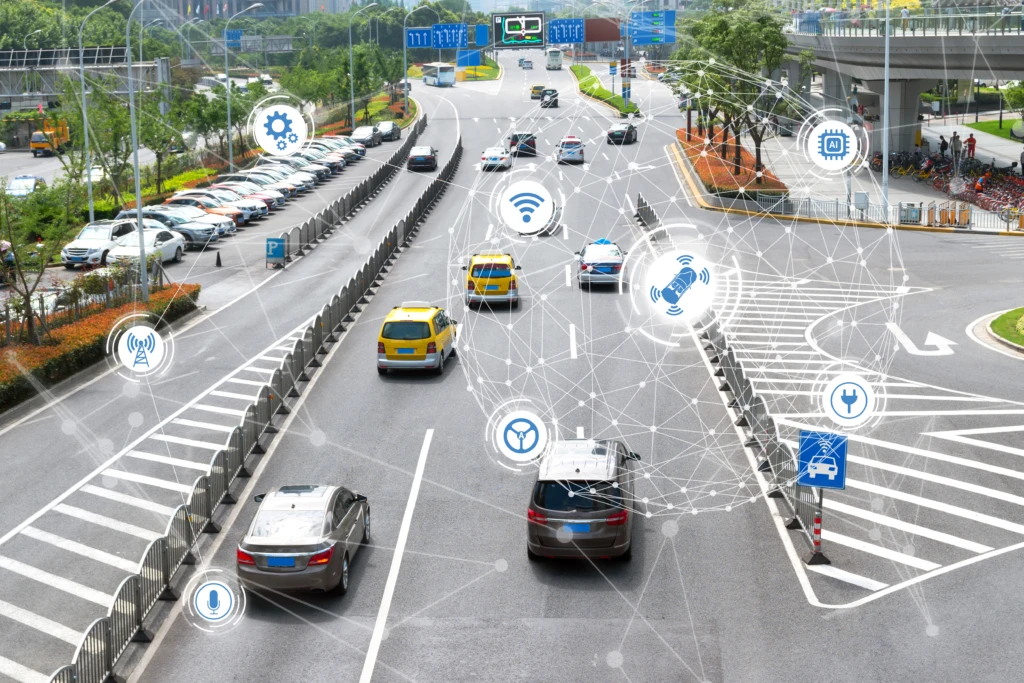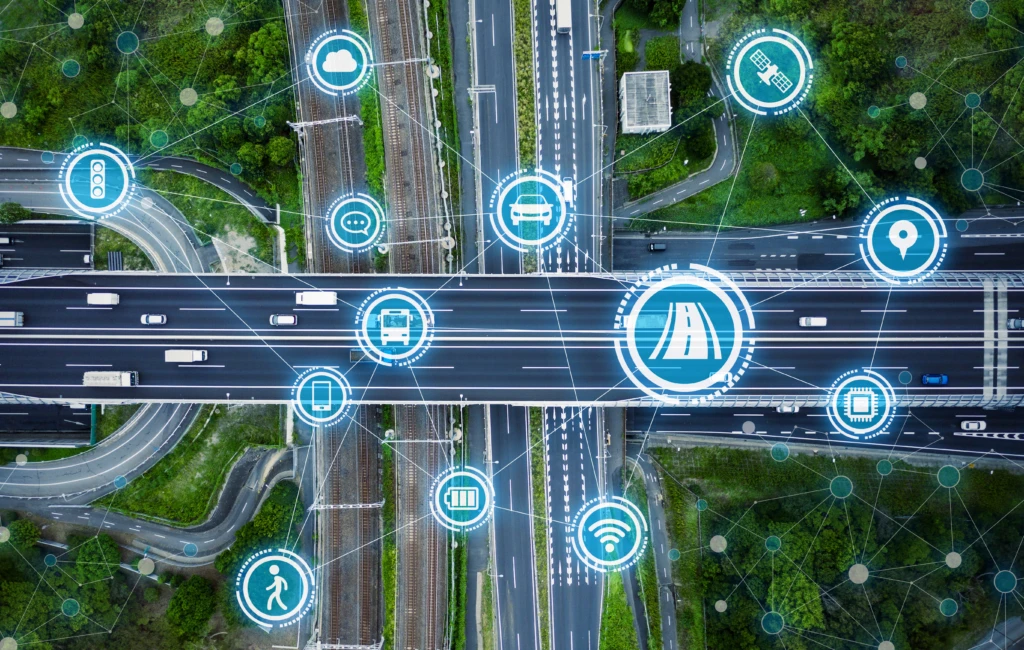
Microsoft automotive momentum: looking forward, back, and beyond

As I reflect on our customers’ and partners’ achievements in such trying times, their successes and innovations inspire me. Looking ahead, I’m both optimistic and excited as the industry continues its forward momentum. I’d like to highlight a few recent examples of our collaboration with leaders in the industry.
In January, General Motors and Cruise announced a long-term strategic relationship with Microsoft to bring together their hardware and software engineering expertise, computing power, and partner network to accelerate self-driving vehicles’ commercialization. Also in January, ZF selected Microsoft and PwC to build ZF’s Digital Manufacturing Platform to translate complex technical information into valuable business insights in continuing efforts around Factory 4.0. Smart factories work quickly, reliably, and offer a high degree of adaptability for rapid design changes. These benefits lead to more engaged employees, increased business velocity, and more substantial growth margins.
This month Volkswagen Group’s Car.Software Organisation announced they’re teaming up with Microsoft to build a cloud-based Automated Driving Platform (ADP) on Microsoft Azure. The solution will leverage its compute and data capabilities to deliver automated driving experiences faster and globally. With ADP running on Azure, VW is looking to Microsoft to increase the efficiency of developing advanced driver assistance systems (ADAS) and automated driving (AD) functions for passenger cars across Volkswagen Group brands. The effort is a continuation of an already flourishing partnership between Volkswagen and Microsoft. VW has worked on the Volkswagen Automotive Cloud since 2018, which will span all of Volkswagen’s future digital services and mobility offerings.
Then, last week, Bosch announced its efforts with Microsoft to develop a software-defined vehicle platform on Azure to connect vehicles to the cloud seamlessly. This collaboration aims to simplify and accelerate vehicle software development and deployment throughout a car’s lifetime following automotive quality standards. The new platform, built on Azure, will incorporate existing software modules from Bosch and enable the software to be developed and downloaded to the control units and vehicle computers. The process will encourage further vehicle innovation and reduce development costs for vehicle software within and across organizations.
As these examples emphasize that 2021 is off to an incredible start. We will continue our efforts to develop leading solutions that support the industry’s evolution. We remain committed to our customers’ successes and helping them build their digital platforms quickly. Together with our partners’ and customers’ efforts, we will make mobility and transportation safer, more fun, productive, and more connected and sustainable for customers and the world.
Looking in the rearview mirror
Looking back, 2020 was a year of challenge, change, and uncertainty for many. However, as the examples above illustrate, it also marked a time of acceleration for the automotive industry that spurred investments in technology and digital transformation. It was also a year of innovation.
In the face of one of the biggest modern global challenges, we focused on our role as an industry partner not just from a technology perspective, but as a trusted business ally. We sought ways to help address customers’ challenges with offerings to help them flourish in ambiguous times. I want to thank our automotive customers for stepping up to support their organizations during COVID-19. Our customers’ strength, grit, resiliency, and fortitude are humbling.
Throughout the year, we focused on five critical pillars to help our customers accelerate their businesses and drive the future of mobility:
- Accelerated vehicle innovation
- Differentiated customer experience
- Resilient operations
- Increased organizational productivity
- Emerging mobility services
I’d like to showcase some fantastic examples across these five pillars:
1. Accelerated vehicle innovation
Vehicles are the front-line of the automotive industry. Over the last few decades, the vehicle’s purpose has transformed from a means-of-travel to a datacenter on wheels. And this evolution has been deeply influenced by the role of technology. Today, modern consumers are purchasing vehicles for their digital capabilities, including safety, compliance, and an exceptional mobility experience. To help fulfill these expectations, we partner with the automotive industry to accelerate vehicle innovation, including vehicle connectivity, autonomous development, and more.
Wayve’s partnership with Microsoft is one great example of innovation in the autonomous landscape. We had the opportunity to collaborate with the London-based startup to expand their team and develop a unique autonomous driving platform with Azure and AI. Since our initial work with Wayve when they first joined Microsoft Startups, Wayve has continuously impressed and pushed the industry through one innovation after another. Now, Wayve is working towards a future where autonomous vehicles can operate in any urban environment.
2. Differentiated customer experience
Customers are the cornerstone for our automotive partners. They must deliver an exceptional customer experience that is personalized, omnichannel-driven, and data-intensive.
Mercedes Benz is a masterful example of an organization that has harnessed technology’s power to transform its world-class customer experience. In the middle of COVID-19 challenges, Mercedes leaned in on Microsoft to help keep their employees safe, develop long-term efficiency, and create a higher customer satisfaction level. To support its service technicians more efficiently repair and maintain its models, Mercedes-Benz USA is outfitting all its authorized American dealerships with Microsoft HoloLens 2 headsets. The devices feature Microsoft Dynamics 365 Remote Assist, a mixed reality app that lets users collaborate during hands-free video calls from their computers. The tools enable diagnostic technicians at the dealerships to troubleshoot a problem in real-time by tapping into Mercedes-Benz’s remote technical specialists’ ecosystem with expertise across its various car lines.
3. Resilient operations
To quickly adapt to vehicle innovation and market fluctuation, we support our automotive customers’ needs to create an agile, responsive production process, and Microsoft’s digital and cloud technologies are transforming the future of supply chain operations and manufacturing. With our resilient operations approach, we offer advanced data integration analytics solutions to help customers stay on track with vehicle innovation while generating supply-chain efficiencies, transforming the factory floor into a “factory of the future,” and reducing costs.
As mentioned earlier, ZF tapped Microsoft technologies to make significant headway. Their digital transformation helped optimize their processes, reduce conversion costs, improve inventory, performance, and quality, and make their workforce more efficient.
4. Increased organizational productivity
Pivoting to a COVID-safe environment and navigating a new normal, every organization, regardless of industry, drastically adapted to the pandemic, and automotive organizations were no exception. With our increased organizational productivity strategy, our goal is to fuel and empower our customers’ entire organization left-to-right with collaboration tools, technical training, intelligent platform services, and the processing power of the cloud to create a connected and productive experience for employees.
Volvo Group embarked on a cross-departmental set of strategies to improve the employee experience. The organization deployed Microsoft 365 to lay the foundation for an intelligent digital workplace. It began working with HR and corporate communications to create a cultural change that adheres to Design Around Me’s precepts. The Design Around Me steering committee collects feedback from local offices through a Yammer community in Microsoft Teams and stores documentation and examples of projects from the field on a SharePoint intranet site.
5. Emerging mobility services
As automotive organizations look to the next era of mobility, data insights define the future. As more vehicles become datacenters on wheels, they map and store the continuously generated data. Data insights help to drive business strategy, build smart mobility services, and improve profitability. Our emerging mobility services approach helps our automotive customers tap data to identify new opportunities to develop, modernize, and expand their businesses’ untapped potential.
SUN Mobility is harnessing the power of Azure and data insights to reimagine electric vehicles to put India on the road to the future. Using Microsoft Azure IoT Hub, Microsoft Azure Data Factory, Microsoft Azure Cosmos DB, Microsoft Azure Databricks, and other solutions, batteries and battery swap stations can transmit performance data at speed and scale. The process helps SUN Mobility understand battery utilization, identify frequently trafficked routes, and determine peak hours. With Microsoft’s data experts’ help, SUN Mobility is thinking beyond software solutions and looking to bridge organizational gaps that are invisible without data. Today, SUN Mobility sees vast opportunities with the cloud and now looks at enhanced security, financial platform integration, fleet management, and energy consumption related to vehicle usage patterns.
I want to thank all our customers for trusting us as their business partner. We look forward to our collaboration toward a more sustainable, safe, and productive world.




